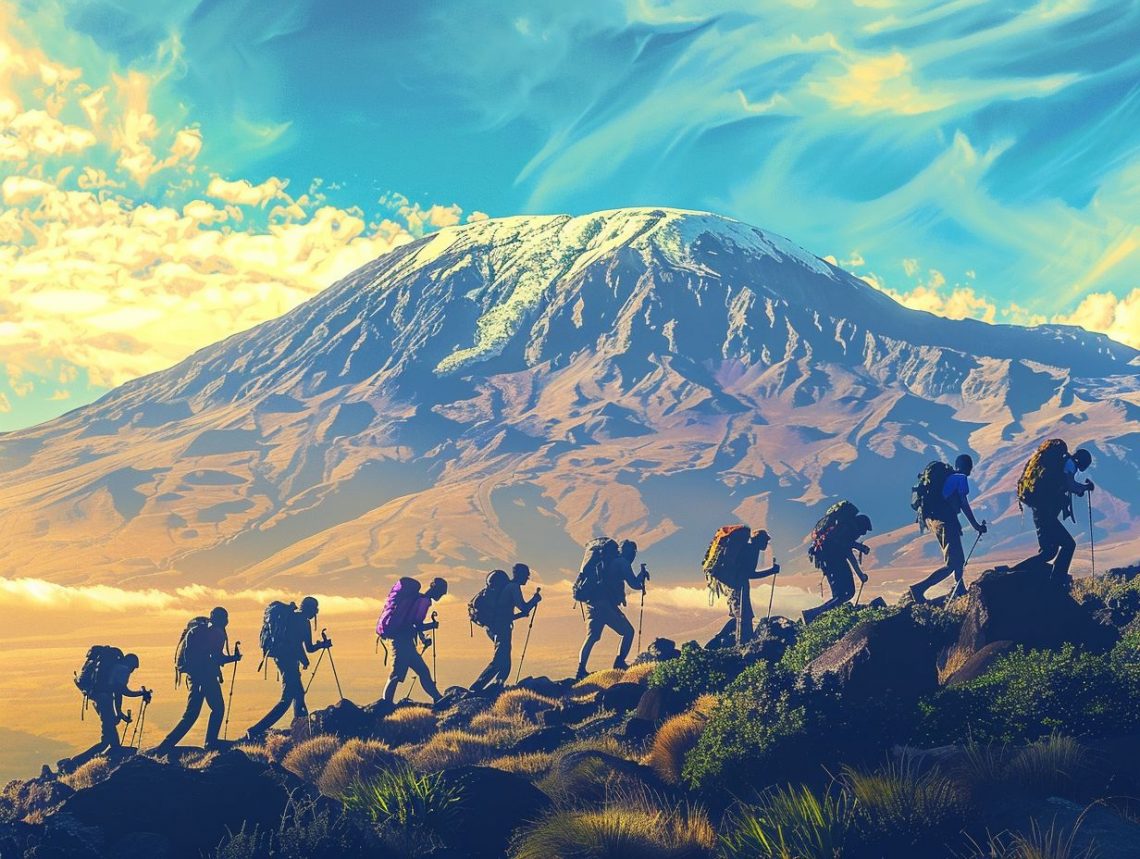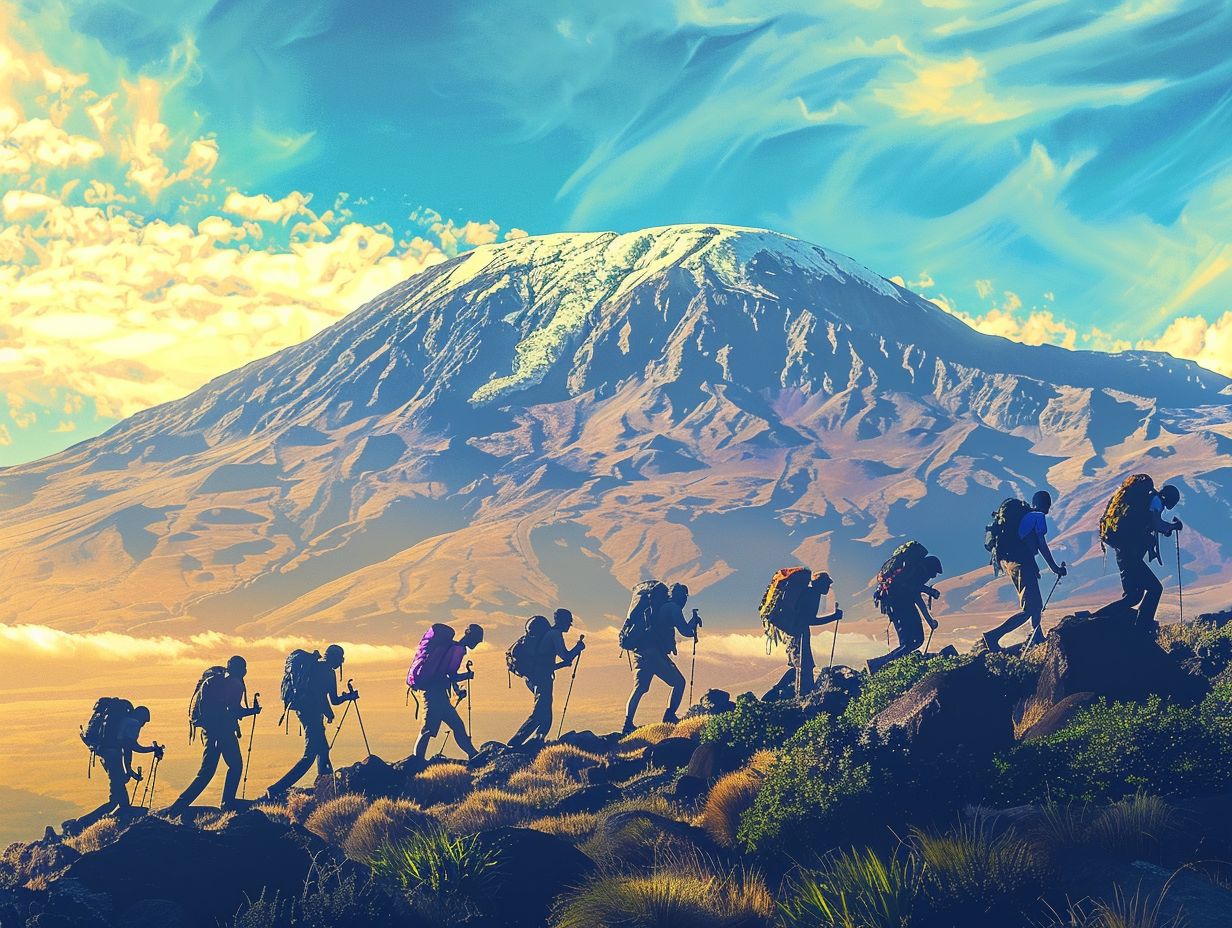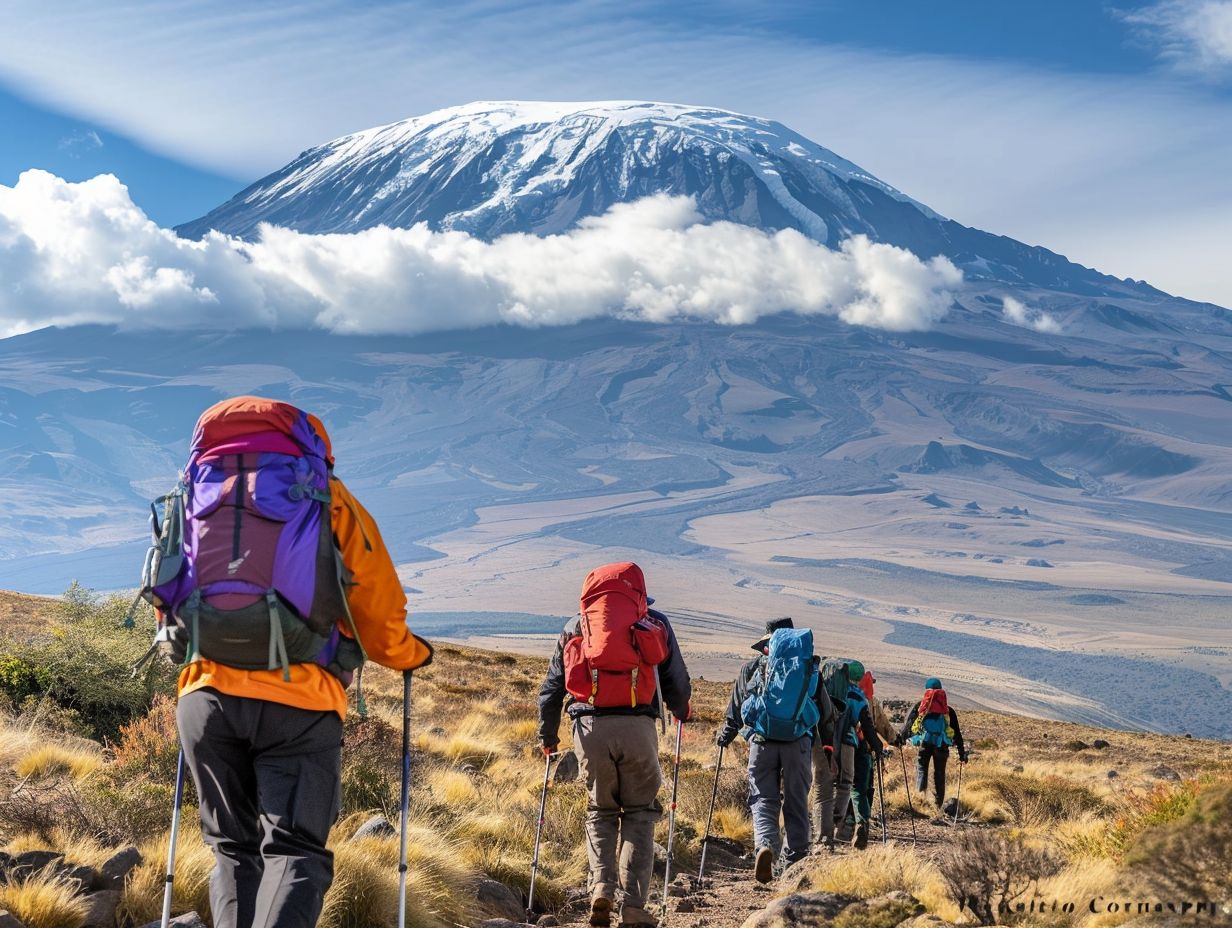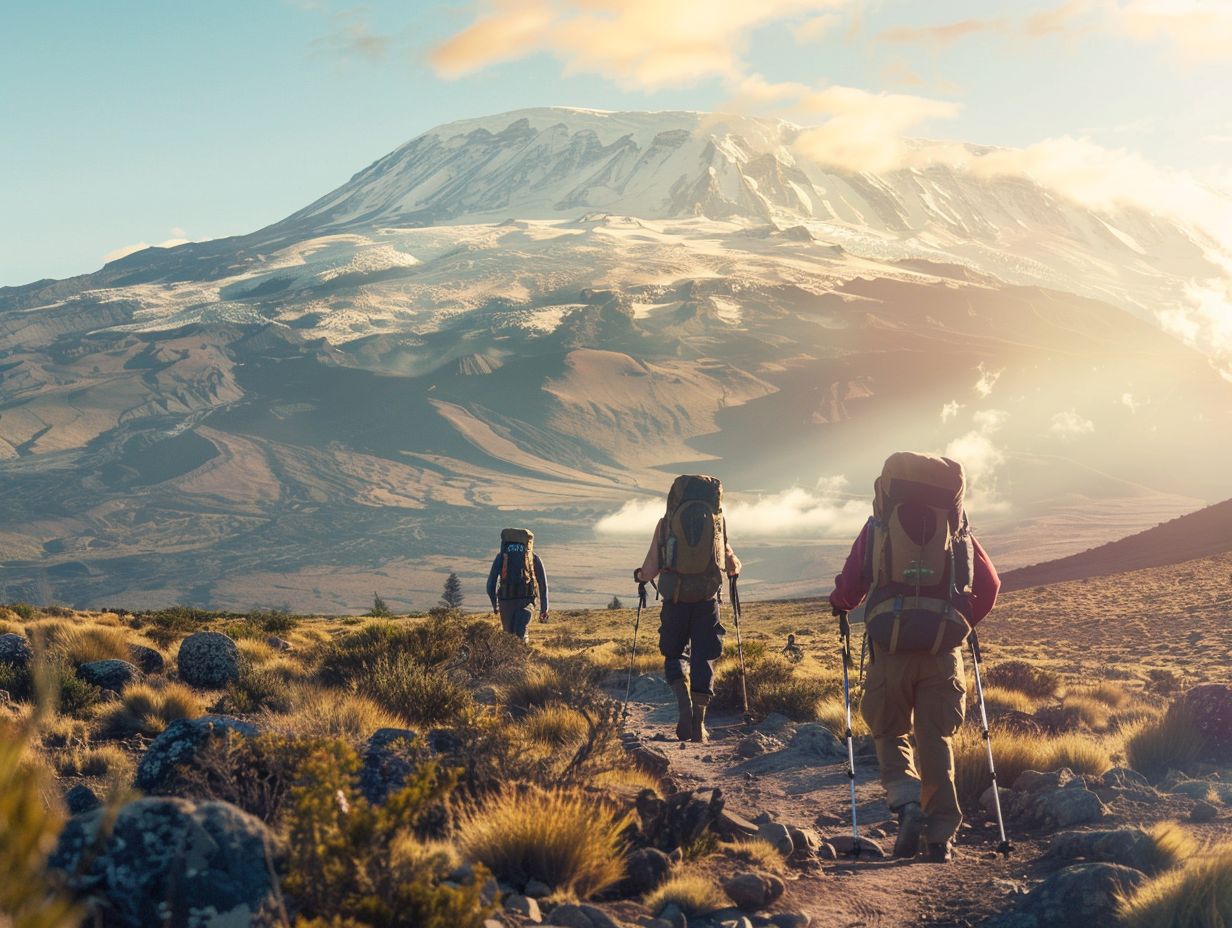
Acclimatization And Altitude Sickness On Mount Kilimanjaro
Are you planning to conquer Mount Kilimanjaro?
Understanding acclimatization and altitude sickness is crucial for a safe and successful climb.
We discuss the symptoms of altitude sickness, the recommended acclimatization schedule for Mount Kilimanjaro, factors affecting acclimatization, and tips on preventing altitude sickness.
Key Takeaways:

- Altitude sickness is a common concern when climbing Mount Kilimanjaro, but proper acclimatization can greatly reduce the risk.
- Factors such as rapid ascent and physical fitness can significantly impact acclimatization on Mount Kilimanjaro, so it is important to plan accordingly.
- Knowing the symptoms, preparing ahead of time, and having a descent plan in case of altitude sickness can help prevent and manage the condition while climbing Mount Kilimanjaro.
What is Acclimatization?
Acclimatization is the process by which the body gradually adjusts to the decreasing levels of oxygen and the changing environmental conditions at high altitudes, such as when climbing mountains like Kilimanjaro.
This adaptation is crucial for climbers to prevent altitude sickness and ensure their safety and success in reaching high peaks.
During acclimatization, the body undergoes remarkable physiological changes, such as an increase in red blood cell production to improve oxygen transportation, higher breathing rates to compensate for reduced oxygen pressure, and the development of new blood vessels.
These changes help climbers cope with the hypoxic conditions at high altitudes, allowing them to perform better physically and mentally.
Without proper acclimatization, climbers are at a higher risk of experiencing symptoms of altitude sickness, including headaches, nausea, fatigue, and dizziness.
What is Altitude Sickness?
Altitude sickness, commonly experienced by climbers ascending high-altitude locations like Kilimanjaro, refers to a set of symptoms caused by the body’s inability to acclimatize quickly enough to the reduced oxygen levels at higher altitudes.
There are three main types of altitude sickness:
- Acute Mountain Sickness (AMS): AMS is the mildest form, characterized by headaches, dizziness, nausea, and fatigue.
- High Altitude Cerebral Edema (HACE): HACE is a severe condition caused by swelling of the brain and requires immediate descent.
- High Altitude Pulmonary Edema (HAPE): HAPE affects the lungs, leading to cough, shortness of breath, and chest tightness.
To prevent altitude sickness, gradual ascent, proper hydration, and adequate rest are crucial, along with medications like acetazolamide.
In severe cases, descent to lower altitudes is the primary treatment to alleviate symptoms and prevent complications.
What are the Symptoms of Altitude Sickness?
Altitude sickness manifests through various symptoms such as headaches, nausea, fatigue, and dizziness, caused by the body’s response to the decreased oxygen levels at higher altitudes.
Headaches are often the first sign of the body struggling with reduced oxygen, leading to a throbbing sensation that can be persistent. Nausea and vomiting are common accompanying symptoms, creating further discomfort.
Fatigue sets in due to the increased effort required for basic tasks at altitude, further impacting energy levels. Dizziness, lightheadedness, and difficulty concentrating also emerge, affecting overall cognitive function.
How to Prepare for Altitude Sickness on Mount Kilimanjaro?
Preparing for altitude sickness on Mount Kilimanjaro involves thorough route planning, understanding the acclimatization process, following safety procedures, and being aware of emergency evacuation protocols.
Choosing the right route is crucial, considering factors like duration, altitude gain, and landscape challenges.
The Lemosho, Machame, and Rongai routes are popular options that offer good acclimatization opportunities. It’s essential to ascend gradually, spending extra nights at certain altitudes to allow your body to adapt to the thinning air.
Proper hydration, nutrition, and rest are key in preventing altitude sickness. Familiarize yourself with the symptoms of altitude sickness such as headaches, nausea, and dizziness and know when to descend if necessary.
What is the Best Time to Climb Mount Kilimanjaro?

The best time to climb Mount Kilimanjaro, considering altitude sickness risks, is during the dry seasons when conditions are more stable, and the intensity of the sun’s rays is lower, reducing the risk of heat-related complications.
During the dry seasons from June to October and from late December to early March, climbers can expect clearer skies and less precipitation, making the trek more enjoyable and safer.
These periods also offer better visibility, allowing hikers to fully appreciate the stunning landscapes and wildlife along the way. The cooler temperatures during these times can help reduce the strain on the body.
The combination of favorable weather and lower sun intensity maximizes the chances of a successful and safe ascent to the summit of Kilimanjaro.
What is the Recommended Acclimatization Schedule for Mount Kilimanjaro?
The recommended acclimatization schedule for climbing Mount Kilimanjaro typically includes rest days, gradual ascents, and pre-acclimatization climbs at lower altitudes to allow the body to adjust to the changing oxygen levels.
Rest days play a crucial role in acclimatization as they give your body time to recover and adapt to the stress of high altitude conditions. It’s essential to incorporate these breaks into the schedule to prevent overexertion and allow for proper rest.
Gradual ascents involve climbing to higher altitudes slowly, giving your body time to acclimate to the decreased oxygen levels.
This method helps minimize the chances of altitude-related illnesses by allowing your body to gradually adjust.
What are the Factors that Affect Acclimatization on Mount Kilimanjaro?
On Mount Kilimanjaro, acclimatization can be influenced by altitude’s impact on oxygen levels, risks like Acute Mountain Sickness, and challenges such as hypothermia from changing environmental conditions.
Altitude plays a crucial role in how the body adapts to reduced oxygen levels. As climbers ascend higher, the atmospheric pressure decreases, leading to lower oxygen saturation in the blood.
This lack of oxygen can trigger symptoms like headaches, dizziness, and fatigue, which are warning signs of Acute Mountain Sickness (AMS).
The rapid changes in altitude can make it difficult for the body to adjust, potentially resulting in more severe altitude illnesses like High Altitude Pulmonary Edema (HAPE) and High Altitude Cerebral Edema (HACE), both of which can be life-threatening if not addressed promptly.
How Does Altitude Affect the Body?
Altitude impacts the body by reducing oxygen saturation levels, leading to altitude sickness symptoms such as High Altitude Pulmonary Edema (HAPE) and High Altitude Cerebral Edema (HACE) in severe cases.
When exposed to high altitudes, the decrease in atmospheric pressure results in lower oxygen availability, making it harder for the body to function optimally.
This reduced oxygen supply affects various bodily functions, including metabolism and cognitive processes. For individuals who ascend rapidly to high altitudes, the risk of developing altitude sickness increases significantly.
High Altitude Pulmonary Edema (HAPE) occurs when fluid accumulates in the lungs due to increased pulmonary arterial pressure. This can lead to severe breathing difficulties and, if left untreated, can be life-threatening.
High Altitude Cerebral Edema (HACE) is a condition where the brain swells due to fluid leakage and can result in symptoms such as confusion, coordination problems, and even loss of consciousness.
Immediate descent to lower altitudes is crucial in treating these severe manifestations of altitude sickness.
What is the Impact of Rapid Ascent on Acclimatization?
Rapid ascent can hinder the acclimatization process, increasing the risk of altitude sickness due to the body’s inability to adjust to the changing oxygen levels quickly, leading to symptoms like headaches, nausea, and fatigue.
When climbers ascend rapidly, their bodies struggle to adapt to the changing conditions of altitude, as the reduction in oxygen levels can cause hypoxia, which is a critical factor contributing to altitude sickness.
Altitude sickness encompasses a range of symptoms, including dizziness, shortness of breath, and disorientation, which can escalate to more severe conditions like pulmonary or cerebral edema, posing life-threatening risks to climbers.
The lack of proper acclimatization results in the body’s inadequate production of red blood cells, essential for oxygen transport, adding to the challenges faced during a rapid ascent.
How Does Physical Fitness Affect Acclimatization?

Physical fitness is key for acclimatization on high-altitude climbs like Kilimanjaro, improving oxygen utilization, lessening altitude sickness symptoms, and aiding adaptation to changing conditions.
Regular exercise enhances the cardiovascular system’s efficiency in oxygen transportation, a boon in oxygen-deprived high-altitude environments.
This improved oxygen delivery aids in combating the effects of hypoxia, a condition caused by decreased oxygen levels in the blood, reducing the risk of altitude sickness.
Individuals with higher levels of physical fitness often experience less fatigue and have better stamina, allowing them to endure the demanding conditions of high-altitude expeditions with more resilience.
How to Prevent Altitude Sickness on Mount Kilimanjaro?
Preventing altitude sickness on Mount Kilimanjaro involves a combination of strategies such as proper acclimatization, medication like Diamox, adequate oxygen intake, and adherence to safety protocols during climbs.
- Acclimatization is vital for adjusting to altitude changes gradually, allowing the body to adapt to reduced oxygen levels. Climbers should maintain a steady pace, stay hydrated, and take regular breaks to aid acclimatization.
- Using medications like Diamox can help in managing symptoms of altitude sickness by speeding up the acclimatization process. It’s crucial to consult with a healthcare professional before starting any medication regimen.
- Supplemental oxygen can help combat altitude sickness, especially in severe cases. Climbers should know the locations of oxygen stations along the routes and be ready to use them if necessary.
- Following safety protocols such as proper gear, staying well-nourished, and being aware of early symptoms of altitude sickness.
Safety should always be a top priority when undertaking high-altitude climbs.
What Are the Medications That Can Help Prevent Altitude Sickness?
Diamox (Acetazolamide) is a common medication used to prevent altitude sickness by aiding acclimatization and reducing symptoms. It’s typically used under the guidance of healthcare providers or expedition medical teams.
Diamox (Acetazolamide) works by increasing the amount of bicarbonate excreted in the urine, which leads to metabolic acidosis and stimulates ventilation, helping the body adjust to higher altitudes more effectively.
It is crucial for individuals planning trips to high-altitude regions to consult with their healthcare professionals for a proper assessment and prescription of medications to prevent altitude sickness.
What Are the Natural Remedies for Altitude Sickness?
Natural remedies for altitude sickness include staying hydrated, consuming foods rich in carbohydrates, maintaining proper oxygen intake, and addressing gastrointestinal issues that may arise due to changing altitudes.
- Hydration is crucial at high altitudes to combat dehydration caused by rapid evaporation and increased respiration.
- Nutrition plays a vital role in replenishing energy levels depleted by the body’s efforts to adjust to decreased oxygen levels.
- Ensuring optimal oxygenation through slow, deep breathing assists in acclimatization and aids in reducing symptoms of altitude sickness.
To manage gastrointestinal discomfort, herbal solutions like ginger or peppermint tea can soothe nausea and aid digestion.
What to Do if Someone Experiences Altitude Sickness on Mount Kilimanjaro?
Recognize symptoms, treat promptly, seek guide advice, secure oxygen, and evacuate if necessary for altitude sickness on Kilimanjaro.
Altitude sickness, also known as acute mountain sickness, often manifests with symptoms like headache, nausea, dizziness, and fatigue due to the decreased oxygen levels at higher altitudes.
Immediately descend to lower elevations if symptoms worsen and do not resolve with rest and hydration.
Involving seasoned Kilimanjaro guides is essential as they are trained to spot early signs of altitude sickness and can suggest proper acclimatization strategies.
Providing supplemental oxygen can mitigate symptoms and prevent further complications, while emergency evacuation plans must be ready for severe cases requiring swift medical attention.
How to Descend Safely if Altitude Sickness Occurs?

Descending safely during altitude sickness on Kilimanjaro involves following safety procedures, initiating evacuation plans if needed, and navigating terrain to lower altitudes where symptoms may alleviate.
During the descent, it is crucial to maintain proper hydration levels, monitor for signs of deterioration in health, and stay in constant communication with your guides or fellow climbers.
- Adjust your pace to allow for adequate acclimatization
- Use trekking poles for stability and reduced strain on the body
- Be prepared to assist others if symptoms worsen
Remember, negotiating steep slopes and uneven paths requires focus and caution, especially in high-altitude environments like Kilimanjaro.”
Frequently Asked Questions
1. What is acclimatization and why is it important on Mount Kilimanjaro?
A: Acclimatization is the process of adjusting to high altitudes and lower oxygen levels. It is important on Mount Kilimanjaro to prevent altitude sickness and ensure a safe and successful climb.
2. How does acclimatization work on Mount Kilimanjaro?
A: When climbing Mount Kilimanjaro, the body needs time to adapt to the high altitude and lower levels of oxygen. The process of acclimatization allows the body to gradually adjust to these conditions.
3. What are the signs and symptoms of altitude sickness?
A: Symptoms of altitude sickness can include headaches, nausea, dizziness, fatigue, and difficulty sleeping. In severe cases, it can lead to more serious conditions such as pulmonary or cerebral edema.
4. Can I prevent altitude sickness while climbing Mount Kilimanjaro?
A: While it is not always possible to prevent altitude sickness, there are steps you can take to reduce your risk. These include proper acclimatization, staying hydrated, and using medications such as Diamox.
5. What is the recommended acclimatization schedule for climbing Mount Kilimanjaro?
A: The recommended acclimatization schedule for climbing Mount Kilimanjaro is to take at least 5-7 days for the ascent, with gradual increases in altitude each day. This allows for proper acclimatization and reduces the risk of altitude sickness.
6. What should I do if I start experiencing symptoms of altitude sickness on Mount Kilimanjaro?
A: If you start experiencing symptoms of altitude sickness while climbing Mount Kilimanjaro, it is important to inform your guide immediately. They will assess your condition and may recommend descending to a lower altitude or taking medication. It is crucial to listen to your body and take any necessary precautions to ensure your safety.